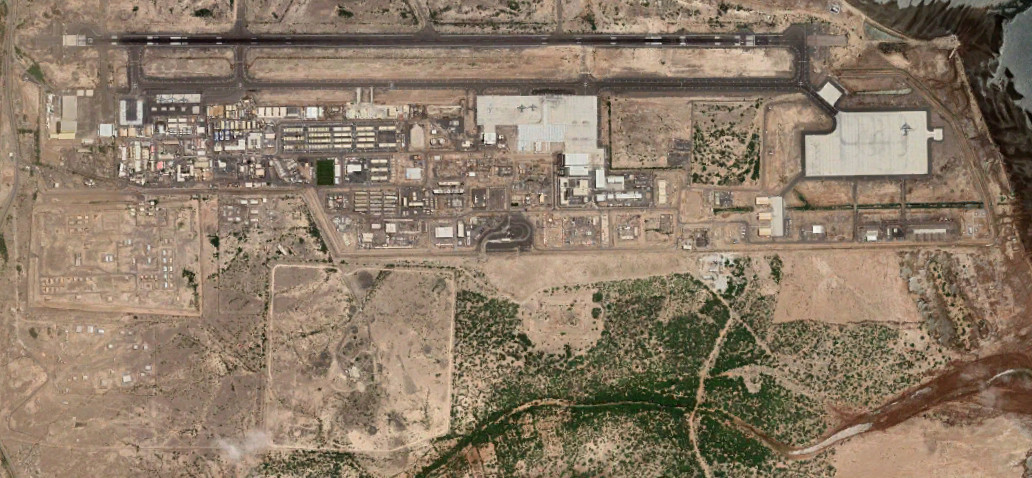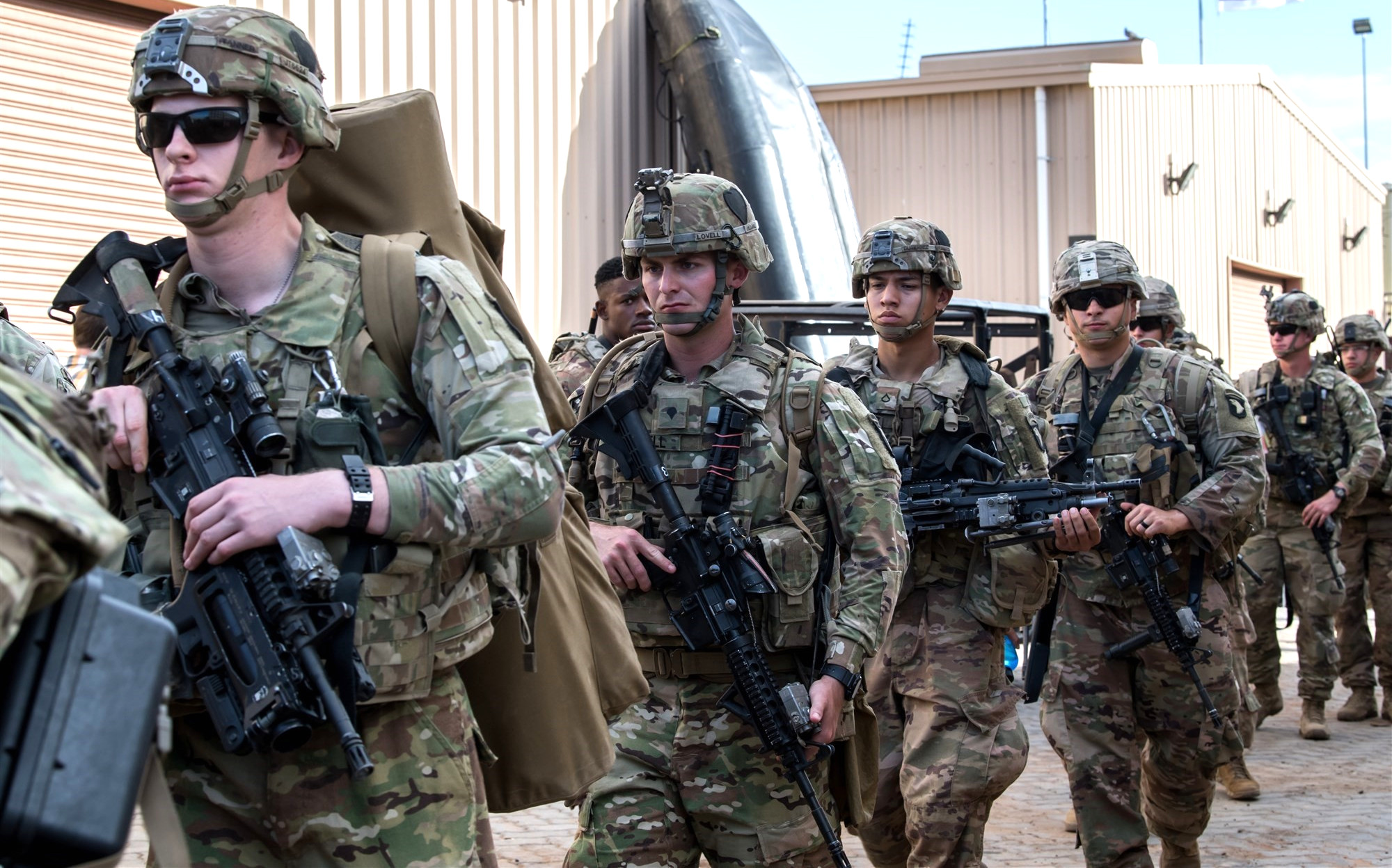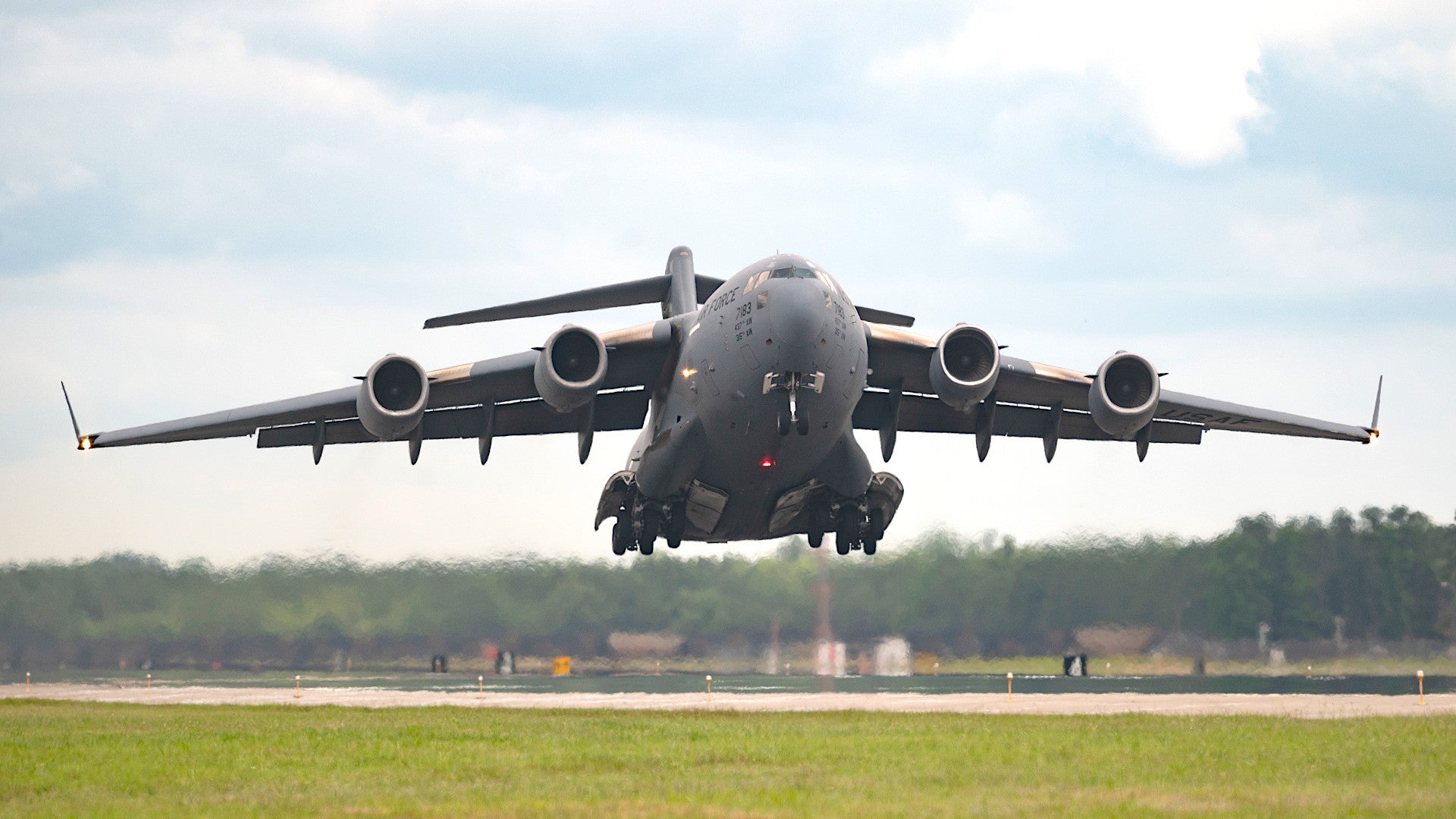Plane spotters using online flight tracking software have noticed an unusual uptick in U.S. Air Force logistics flights, primarily involving C-17A Globemaster III cargo planes, heading from various points in the United States to the East African country of Djibouti in the past few days. This comes amid reports that the U.S. military has started positioning troops in the region for a potential evacuation operation into neighboring Ethiopia, which is embroiled in a civil conflict. An alliance of armed groups in that country is now threatening to march on the capital and overthrow Prime Minister Abiy Ahmed if he does not step down and open a path to a new government.
Since Nov. 19, 2021, at least 16 different C-17As, as well as a larger C-5 Galaxy cargo plane, have been tracked flying from multiple U.S. Army bases in the United States – Fort Bragg in North Carolina, Fort Campbell in Kentucky, and Fort Stewart in Georgia – to Djibouti–Ambouli International Airport. The aircraft have all made their way to East Africa via a number of common intermediate destinations, including Bangor in Maine, Ramstein Air Base in Germany, and Moron Air Base in Spain.
Djibouti–Ambouli International Airport shares its runway with Camp Lemonnier, a sprawling U.S. military complex that serves as America’s main operational hub in Africa. It is the primary staging point for missions across East Africa, including counter-terrorism efforts in neighboring Somalia. It also supports American military activities on the Arabian Peninsula, which lies just across the Gulf of Aden, including in Yemen.

It is unclear what the purpose or purposes of these recent flights are or what exactly they might be carrying. The last time a surge of activity like this was observed at Camp Lemonnier was between December 2020 and January 2021, when significant numbers of U.S. personnel and aircraft were deployed to the region to support the withdrawal of the majority of American troops from Somalia.
While we can’t say with absolute certainty that this is the case, one distinct possibility is that the U.S. military is staging forces in the region now in case of the need to launch an operation into Ethiopia to help U.S. diplomatic and other government personnel, as well as American nationals, evacuate the country if the security situation devolves. Just over a year ago, a civil war erupted in Ethiopia between the country’s central government and authorities in the northern Tigray Region.
Friction had been growing in the country since 2018, when Prime Minister Abiy Ahmed came to power. Abiy is an ethnic Oromo and the first member of that group to hold this post. Ethnic Tigrayans from the Tigray People’s Liberation Front (TPLF) had largely held political sway in Ethiopia since 1991. That year, a rebel coalition, with the TPLF at its forefront, successfully overthrew the Derg military junta that had ruled the country since 1975. Things had come to a head in September 2020, when Prime Minister Abiy said that the Ethiopian government would not respect the results of controversial regional elections in Tigray.

Since the fighting broke out, both sides have credibly accused each other of committing atrocities during this latest civil conflict, which has prompted a humanitarian crisis in Ethiopia. Foreign forces have been involved in the war, including the intervention of troops from neighboring Eritrea on the side of the central government. Prime Minister Abiy won the Nobel Peace Prize in 2019 for his efforts to resolve the long-standing conflict between Ethiopia and Eritrea.
In recent months, the TPLF and forces aligned with it have been pushing toward Addis Abba. Earlier this month nine rebel groups, including the TPLF, announced that they had formed an alliance to unseat Abiy and his government. Just today, the Prime Minister reportedly headed to the front lines to directly oversee the counter-offensive.

CNN
reported yesterday that elements of the Army’s 75th Ranger Regiment, an elite special operations unit, had deployed to Djibouti to be in position for a potential evacuation operation. These troops were from the Regiment’s 1st Battalion, which is based at Fort Stewart, one of the locations where C-17As have recently been spotted departing.
That same CNN report said that the Wasp class amphibious assault ship USS Essex and the rest of its Amphibious Ready Group (ARG), which are carrying elements of the 11th Marine Expeditionary Unit (MEU), have been alerted that they could be called in to help, as well.
MEUs operating from ARGs have been utilized on many occasions in the past to rush reinforcements to countries experiencing civil unrest, as well as natural disasters or other humanitarian crises, to bolster security at U.S. diplomatic facilities or help Americans evacuate. The 11th MEU has AV-8B Harrier jump jets, MV-22B Osprey tiltrotors, CH-53E Super Stallion transport helicopters, UH-1Y light armed helicopters, and AH-1Z Viper gunships. These assets, among others available to this amphibious force, would be useful for support evacuation missions to extract Americans caught up in any fighting in land-locked Ethiopia.

Having additional elements from the Army forward-deployed in Djbouti would make good sense, too. Though we don’t know what units might have been deployed so far beyond the Rangers—Fort Bragg is the service’s main hub for airborne and special operation units and is the home of the 82nd Airborne Division. Troops from the 82nd form the core of the Immediate Response Force (IRF), an extremely high-readiness task force that is on call to deploy with hours in response to various contingencies. Personnel from the IRF were among those deployed to Afghanistan earlier this year to support the evacuation operations there.
Fort Campbell is the main hub for the Army’s elite 160th Special Operations Aviation Regiment, elements of which supported the evacuation mission in Afghanistan. The 160th’s helicopters, with support from Air Force special operations tankers, would provide one way for Army special operators to make their initial movement into areas of Ethiopia that might be experiencing active conflict, where they could then help coordinate follow-on deployments. Those helicopters would also provide an immediate response element once inside the country to help rescue individuals who might be in otherwise hard-to-reach locations, something The War Zone
explained in depth in the context of the Afghanistan evacuations.
The U.S. military has forces forward-deployed in Djibouti that it could call upon. At least in the past, aircraft forward-deployed to the base on a more regular basis have often included Air Force CV-22B Ospreys and MC-130 special operations tanker-transports. A rotational regional Army contingency response unit, the East Africa Response Force (EARF) is based at Camp Lemonnier and has deployed in response to similar potential crises in the past.

The U.S. State Department, which would be in charge of any evacuations and would have to request U.S. military support before it could be employed, has already downplayed the likelihood that such an operation is imminent.
“There are no plans to fly the U.S. military into Ethiopia to facilitate evacuations or replicate the contingency effort we recently undertook in Afghanistan, which was a unique situation for many reasons,” a senior State Department official told journalists on Monday. “We are always, of course, engaged in contingency planning for hypotheticals, but again, with the airports wide open, there’s no reason for that at all.”
Earlier this month, the State Department did order the evacuation of non-essential personnel and dependents from Ethiopia in response to the conflict. It has also advised American nationals to leave the country.
“There is some massive progress in trying to get the parties to move from a military confrontation to a negotiating process,” Jeffrey Feltman, Special Envoy for the Horn of Africa, told reporters today. “I was encouraged that [Abiy] was willing to talk to me in detail about what a diplomatic process could look like.”

“What I worry about is that the military developments on the ground are moving more rapidly than we’ve been able to get the diplomatic process to move,” he also cautioned. “I was trying to tell him [Abiy] what was the cost to Ethiopia’s stability. The cost to the civilians, the dignity of Ethiopia has been damaged by this war. The costs are too high.”
Regardless of the State Department’s current position on the crisis, President Joe Biden and his administration are no doubt eager to avoid any potential repeat of the chaos of the Afghanistan mission. The Biden administration continues to face significant domestic criticism for how those evacuations were handled, with nearly 200 American citizens and thousands of permanent U.S. residents still stranded in that country.
With all this in mind, it would not necessarily be surprising that the decision has already been made to position a large and capable response force in the region now, even if it never gets the order to deploy into Ethiopia.
Of course, there remains the possibility that some or all of these flights to Djibouti could be unrelated to the crisis in Ethiopia. There are certainly multiple other hotspots in East Africa, as well as ongoing U.S. operations in Yemen across the Gulf of Aden. At the same time, it seems much less likely that any of those activities would prompt the surge in sorties that we have seen recently.
All told, it remains to be seen whether U.S. military forces will deploy to Ethiopia, but there is strong evidence now that American troops, aircraft, and ships are increasingly in a position to do so, if necessary.
Contact the author: joe@thedrive.com
